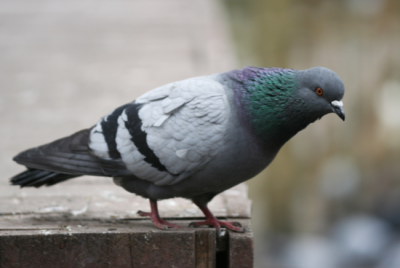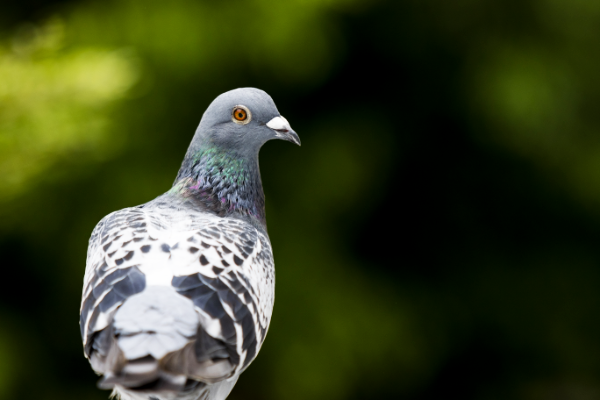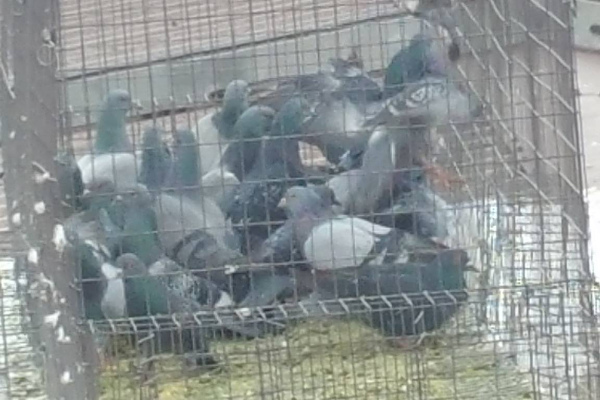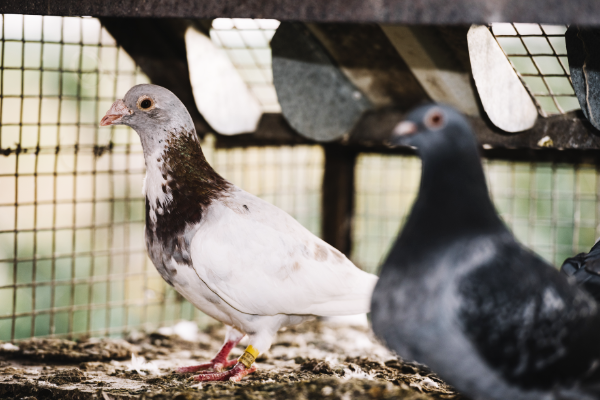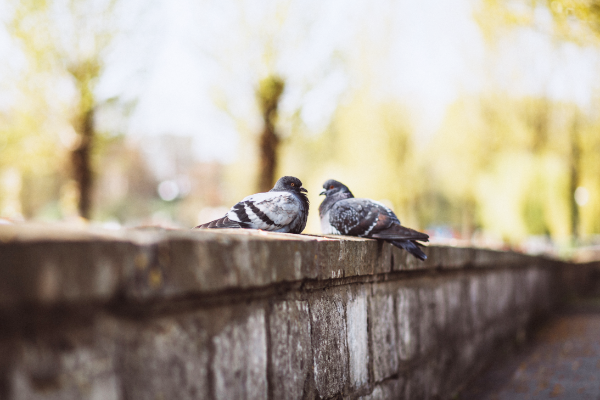Description and Identification
Pigeons
The Columbidae family of birds contains two species. Although, importantly, this could vary depending on the source of taxonomy. One of these species is the pigeon. At least one subspecies of the pigeon family are found on every continent except Antarctica. Throughout history, these fascinating birds have been used in militaries, transporting messages, and in some places, food. Below are a few ways of describing and identifying the iconic bird.
Appearance
The appearance of the pigeon can be broken down into several different categories. By focusing on each of these characteristics individually, identifying the bird is much easier to accomplish.
Size: The size of this bird can vary drastically from species to species. There is a wide range of both heights and weights for the species, with significant variances in each. The most abundant species resides in New Guinea and approaches the size of a small turkey. Another distinct characteristic of this species is their pudgy long-necked bodies.
Coloring: Just as the size of this bird has significant variances, the colorations can vary widely depending on their habitat. Some species may exhibit drab coloring, whilst others can have bright, almost metallic-looking foliage.
Feathers: The feathers of the pigeon are quite unique among all birds. They are wide and exhibit a tapering shape in their length. They also are attached very loosely, lending to the tendency of falling out with ease. This is useful during a predatory assault, as it allows the pigeon to slip out of the jaws of its attacker, leaving only feathers behind.
Diet
The diet of the pigeon is one of opportunistic means. This is how the pigeon can have such a widespread habitation, throughout many different habitats and climates. They have the resilient ability to find food in a variety of sources; here are a few of them.
Seeds and Berries: Although the pigeon will look for food in any way they can acquire it, seeds and berries are their preferred meal of choice. Seeds would be considered their natural diet and will provide the nutrients that are best for this type of bird. Alongside seeds in their diet are berries, which are also a preferred choice.
Insects and Fruit: The pigeon has a very low preference for insects. This choice of meal would be reserved for situations where no other options are available to them. Fruit is a more preferred option than insects but is still less desirable to the birds than seeds and berries.
Trash and Scavenging: Pigeons are opportunistic in their search for food and will seek to find sustenance in any form. Particularly in urban settings, where seeds and berries can be scarce, they will resort to rummaging through trash to find scraps of leftover food items. This practice is one of the reasons the pigeon has become an iconic bird in large cities like New York and Chicago.
Behavior
The behavior of pigeons closely follows their dieting habits, as it exhibits some of the same opportunistic characteristics. Here are a few behaviors that can be observed in pigeons.
Mating: An interesting note about the pigeon is that they are a monogamous species of bird. This means that once they choose their initial mate, that is their partner for life. The selection of this initial mate can be made opportunistically, however.
These birds breed year-round, but the most substantial breeding activity can be observed in the summer and spring seasons.
Social: The pigeon is a bird that relies on social interactions as a method of protection from its predators. Pigeons are often found in flocks, for the same reason that fish travel in schools. The large coordinated group movements of pigeons confuse predators and provide an excellent defensive measure for them.
Sleep Habits: Interestingly, pigeons do not sleep in the nests they make. The sole purpose of a nest for the pigeon is to protect their eggs and create a warm environment for their hatchlings to mature. It is not uncommon to see a pigeon sleeping on the ledge of a tall building in a city, or warm, safe rooftops. They will choose a location to sleep based on the availability of nearby resources such as food.
Habitat
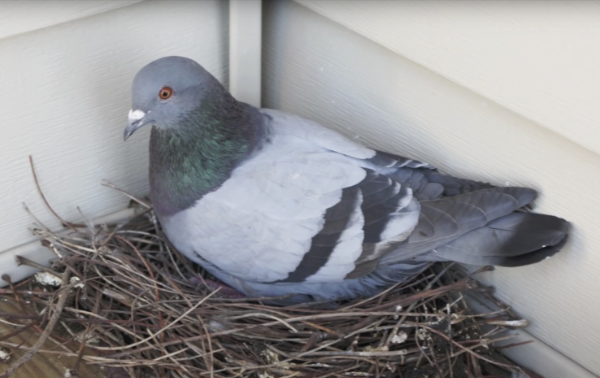
Geographically speaking, the pigeon lives almost everywhere except the world's coldest points and the scorching deserts. Even though they live all around the world, the scavenging tendencies and need for a safe place to sleep at night lend to the selection of two main types of habitats.
Urban Areas: The abundance of high ledges on buildings, protective awnings on overpasses, and easily sourced foods create the perfect habitat for a pigeon in urban areas. The large amounts of garbage that major cities produce create a renewable food source for the birds. The abundance of the food source means it is not uncommon to see these birds in densely populated areas where most other animals will avoid.
Cliff Faces: Because the pigeon does not sleep in its nest, one of its essential needs is a place where it can sleep without fear of predators. Cliffy areas, particularly areas surrounded by sea, offer a protective advantage from predators while they sleep. In addition to this protection, vegetation containing berries and other food sources is often undisturbed in these settings, due to difficulty in other animals accessing it.
Sounds
The pigeon has a sound that is very distinct within its species. They use these sounds for various purposes and will often use gestures and actions to accompany the sounds.
The “Coo”: The most characteristic sounds attributed to the pigeon does not vary widely from species to species. The sounds are often described as a “coo.” The sound is very versatile for the animal and is used primarily in communicating with other members of its flock to warn of danger. It is also used in conjunction with an action known as strutting to attract a mate.
Grunting: Another sound that can be attributed to the pigeon is a noise of distress and is best described as a grunting noise. This sound is used almost exclusively for communication as it indicates to other pigeons in the area that danger is afoot.
Droppings
One aspect of the species that is of particular annoyance, especially in the urban setting, is their droppings. Many factors make pigeon droppings undesirable and even dangerous here is a quick look at a few.
Disease: It is quite often stated that pigeon droppings pose a significant hazard for spreading disease. The truth of the matter is that pigeon guano is not any more dangerous than the droppings of any other animal. The problem with the excrement is to people with pre-existing respiratory illnesses that can be exacerbated during the removal process. Disease occurs when the powdered dried feces enter the lungs, where it can cause infection.
Sanitation and Aesthetic Issues: The primary issue with pigeon droppings is the buildup and management problems that are accompanied by it. The affinity of the urban setting to the pigeon, and their tendency to sleep on ledges of buildings, often lead to a buildup of material on storefronts and buildings. Unfortunately for the proprietor of the building, this requires removal and sanitation so that the unsightly droppings don't affect business.
